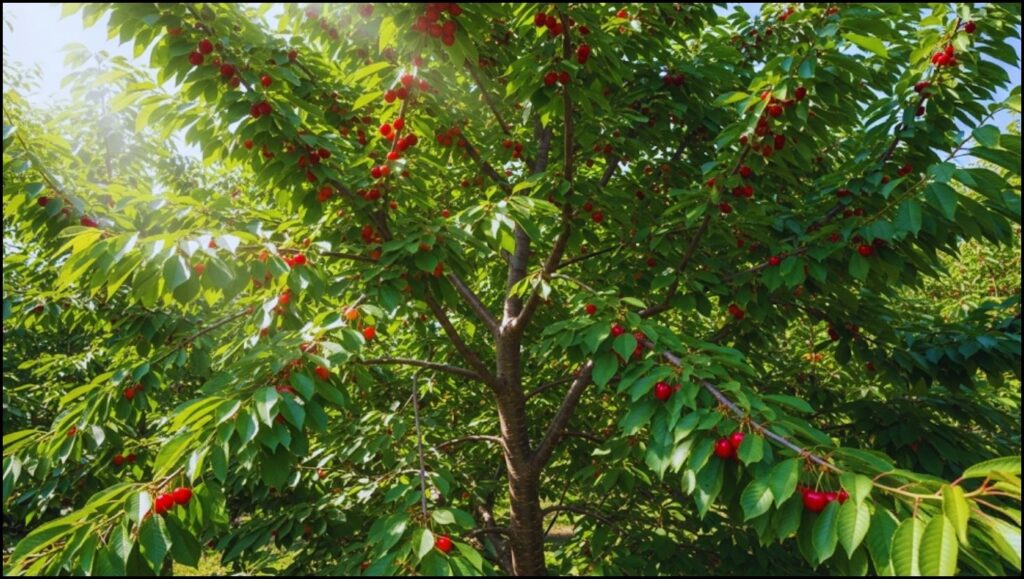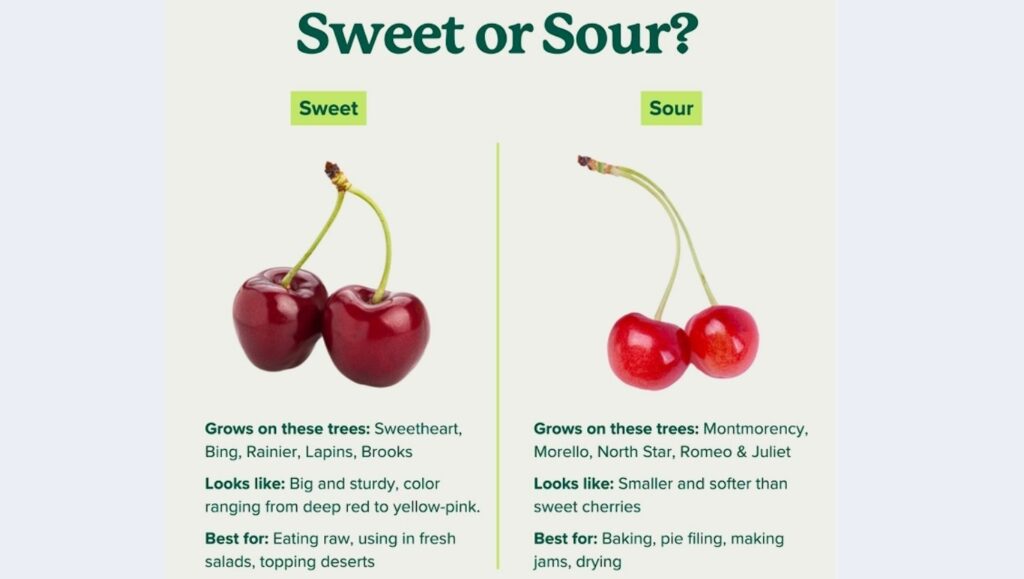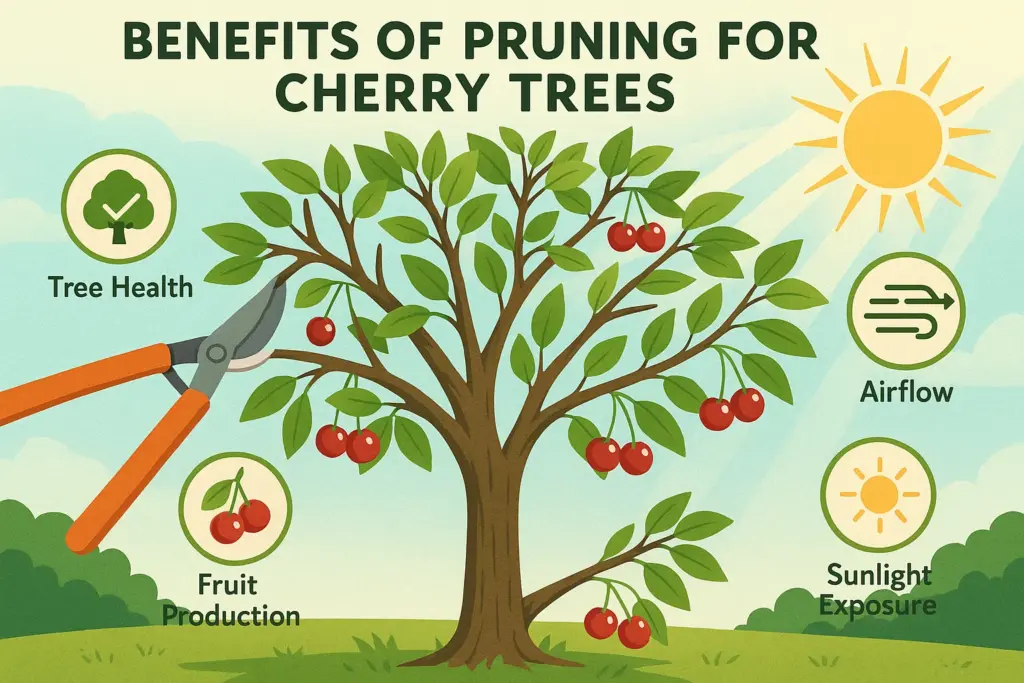
For home gardeners and aspiring orchardists, the allure of a cherry tree is twofold: the explosion of delicate pink and white blossoms in spring, followed by a summer harvest of sweet or tart fruit. To successfully grow a cherry tree, however, requires more than just planting a seed and hoping for the best. Success hinges on careful planning, informed variety selection, and consistent, proactive care throughout the year.
This guide synthesizes advice from horticultural experts and leading agricultural institutions to provide a clear path from selecting a sapling to harvesting your first crop.
Key Insights for a Healthy Cherry Tree
| Key Factor | Essential Detail |
| Variety Selection | Choose between sweet or tart (sour) types and verify if it’s self-pollinating or needs a partner tree. |
| Site & Sunlight | The tree must receive at least 6 to 8 hours of direct, full sun each day. |
| Soil Requirements | Soil must be fertile and, most importantly, well-drained to prevent root rot, a common issue. |
| Pruning | Annual pruning in late winter during dormancy is critical for air circulation, light penetration, and fruit production. |
Choosing Your Champion: Selecting the Right Cherry Variety
The first critical decision is what kind of cherry you want to grow. Cherry trees are broadly divided into two categories: sweet cherries (Prunus avium) and sour, or tart, cherries (Prunus cerasus).
Dr. Amelia Vance, a pomologist with Cornell AgriTech, a research arm of Cornell University’s College of Agriculture and Life Sciences, emphasizes the importance of this choice. “Sweet cherries like ‘Bing’ or ‘Rainier’ are fantastic for eating fresh, but they are often larger trees and can be more sensitive to climate,” she stated in a university publication. “Sour cherries, such as ‘Montmorency,’ are the gold standard for pies and preserves. They are typically smaller, hardier trees, making them a more forgiving option for many home gardeners.”
Understanding Pollination Needs
A common point of failure is overlooking pollination. Many sweet cherry varieties are self-unfruitful, meaning they require a different, compatible cherry variety nearby for cross-pollination to produce fruit. According to a guide from the University of California Agriculture and Natural Resources, varieties like ‘Bing’, ‘Lambert’, and ‘Royal Ann’ all need a pollinizer.
In contrast, most sour cherry varieties are self-fruitful and can be planted alone. For gardeners with limited space, a self-pollinating sweet cherry, like ‘Stella’ or ‘Lapins’, is an excellent choice. This is one of the most critical aspects of cherry tree care.

The Foundation of Success: Planting Cherry Trees Correctly
Where and how you plant your tree will determine its long-term health and productivity.
Site Selection and Soil Preparation
Cherry trees demand full sun. A location receiving less than six hours of direct sunlight will result in sparse foliage and poor fruit development. The United States Department of Agriculture (USDA) provides Plant Hardiness Zone maps that help gardeners determine which varieties will survive the winter temperatures in their region. Most cherry varieties thrive in zones 4 through 7.
Excellent drainage is non-negotiable. “Cherry trees are highly susceptible to root rot if their roots sit in waterlogged soil,” advises a planting guide from the Purdue University Extension. To test drainage, dig a hole about a foot deep and fill it with water. If it doesn’t drain away within a few hours, the site is unsuitable. Amending heavy clay soil with organic matter like compost can improve its structure and drainage before planting cherry trees.
The Planting Process
The best time for planting is typically in the early spring, after the last frost, or in the fall.
- Dig the Hole: Dig a hole that is twice as wide as the tree’s root ball but only as deep as the root ball itself.
- Prepare the Tree: If you have a bare-root tree, soak the roots in water for an hour before planting. For a container-grown tree, gently loosen any circling roots.
- Position the Tree: Place the tree in the center of the hole. The graft union—a noticeable bulge on the lower trunk—must be at least two inches above the final soil line.
- Backfill and Water: Fill the hole with the original soil, tamping it down gently to remove air pockets. Water the tree thoroughly immediately after planting.
Essential Cherry Tree Care for Abundant Harvests
Once established, ongoing care ensures your tree remains vigorous and productive.
Watering, Mulching, and Fertilizing
Young trees require consistent moisture, especially during their first few years and during dry spells. A deep watering once a week is generally better than frequent, shallow applications. Applying a 2-3 inch layer of organic mulch, like wood chips or compost, around the base of the tree (but not touching the trunk) helps conserve soil moisture and suppress weeds.
According to a report from the Utah State University Extension, most cherry trees do not require heavy fertilization. A light application of a balanced fertilizer (e.g., 10-10-10) in the early spring is usually sufficient.

The Art and Science of Pruning
Pruning is perhaps the most intimidating task for new growers, but it is vital. The primary goals are to establish a strong structure, improve air circulation to reduce disease risk, and allow sunlight to reach the developing fruit.
“Prune cherry trees in late winter when the tree is fully dormant,” recommends the Royal Horticultural Society. “For sweet cherries, aim for a ‘central leader’ structure, which is like a Christmas tree shape. For sour cherries, an ‘open center’ or vase shape is often more productive.” Removing dead, damaged, or crossing branches should be the first step each year. Growing a cherry tree is a long-term investment that pays dividends in both scenic beauty and delicious, homegrown fruit. While it requires more attention than a simple shade tree, the rewards of a successful harvest are well worth the effort. With the right knowledge and preparation, gardeners can look forward to years of beautiful blooms and flavorful cherries.
